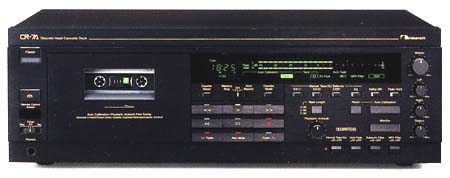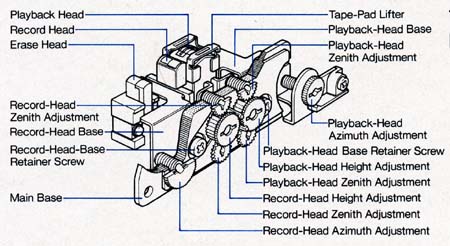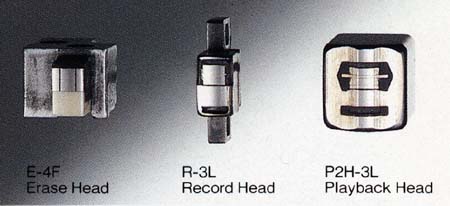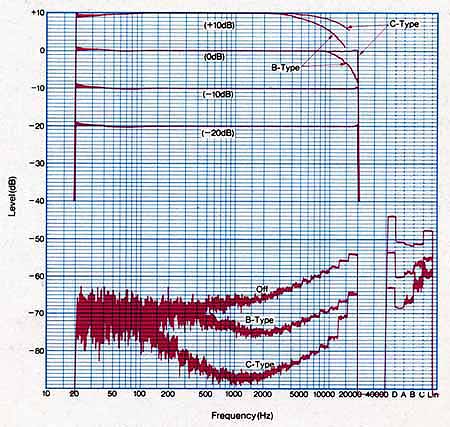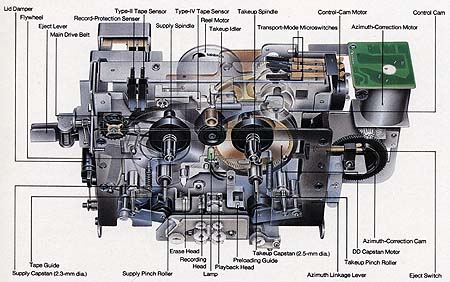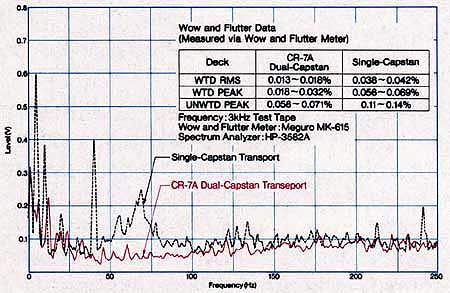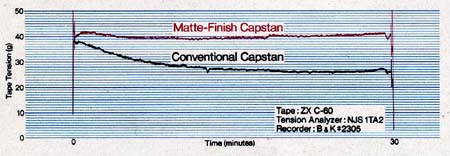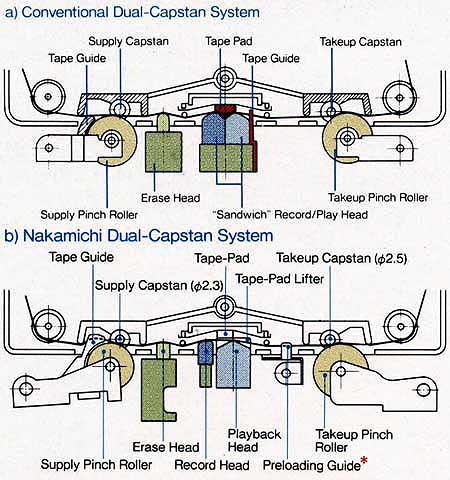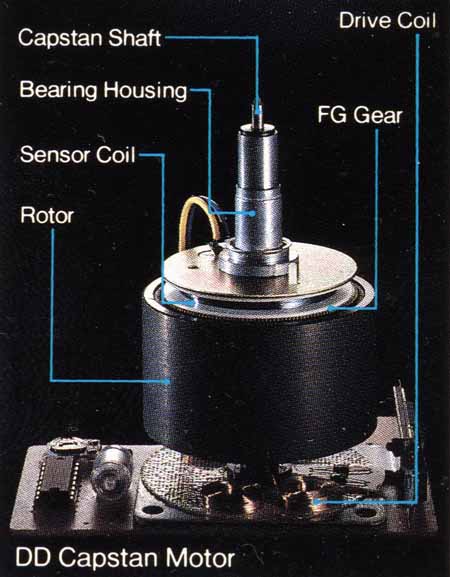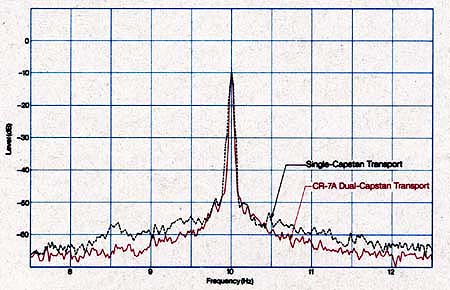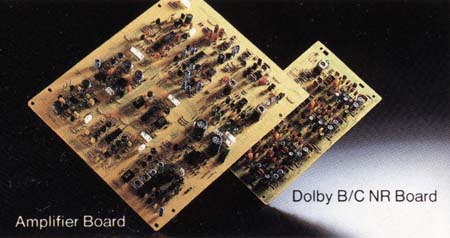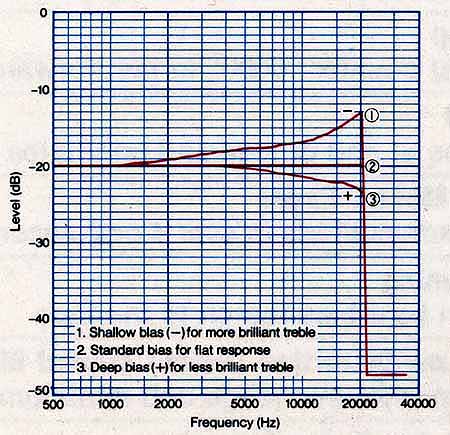Nakamichi CR-7A Discrete Head Cassette Deck
This page provides an in-depth look at the Nakamichi CR-7A Discrete Head Cassette Deck, including
We hope that this information will help others with selecting a cassette deck for audio preservation work.
The Audio Archive considered many machines for cassette transfer, including the venerable Nakamichi Dragon, before finally standardizing on the Nakamichi CR-7A for preservation work.
The cassette format, also formally known as the "Philips Compact Audio Cassette", is heading towards obsolescence. Fewer, if any, high quality cassette machines are still being manufactured. Many of the current machines on the market are of the "dual well" design for duplicating cassettes and have features like "auto reverse" which add mechanical complexity and imprecision.
With that said, our goals for cassette deck are:
- High quality playback of music and studio recordings
- High quality playback of spoken word and field recordings
- Long-term maintainability
The Nakamichi CR-7A cassette deck fit these requirements better than any of the many machines we considered and evaluated.
To serve the needs of music and studio recordings, the Nakamichi CR-7A outperforms any current production machine on a broad range of specifications from frequency response and distortion, to noise and separation. For example, the wow-and-flutter performance of the Nakamichi CR-7A (0.027%) is three times better than a current production machine like the Tascam 202 Mk IV (0.09%).
On the other hand, field recordings, and in particular spoken word recordings made in the field, have unique requirements. Typical cassette field recorders were subject to vibration and impacts when moved around, which in turn could affect the mechanical alignment of the recording heads. Furthermore, low-cost cassette recorders were often used in the field with poor or built-in microphones, delivering very limited frequency response, especially with spoken word recordings. To play back these recordings, the key requirement is manual playback azimuth adjustment to maximize frequency response. Altogether, only three Nakamichi machines were manufactured with manual playback azimuth adjustment:
- Nakamichi CR-7A (1986-1993)
- Nakamichi Cassette Deck 1 (1990-1992)
- Nakamichi DR-1 (1992-)
Among the above three Nakamichi cassette decks, the CR-7A wow-and-flutter (0.027%) outperforms the Cassette Deck 1 and DR-1 (both 0.035%). Only the Nakamichi Dragon has superior wow-and-flutter (0.019%).
The Nakamichi Dragon has automatic azimuth correction (NAAC), which is a fantastic capability with music and high-quality studio recordings. However, the automatic azimuth correction relies on high frequency information to function properly, and field recordings may not have sufficiently high frequencies for the Nakamichi Dragon's NAAC to track. In this case, manual playback azimuth adjustment is the only possibility to correct for poorly aligned recording heads.
Electromechanical simplicity helps long-term maintenance of any precision machine. To that end, the Nakamichi CR-7A lacks mechanically complex "convenience" features like auto-reverse or dual wells. Later production models of the Nakamichi CR-7A replace critical belts with a far more reliable gear drive. The Nakamichi CR-7A shares key parts like playback heads with other Nakamichi models, which makes sourcing of spare parts just a little easier.
What follows is all of the unedited text (including hyperbole and typos), all the technical details, and most of the pictures taken from an original Nakamichi CR-7A/CR-5A brochure. The Nakamichi CR-7A and CR-5A differ in that the CR-7A adds the following features:
- Auto Calibration
- Playback Head Azimuth Fine Tuning Control (manual)
- Real Time Tape Counter
- Auto Fade
- Subsonic Filter (for recording warped discs)
- Wireless Remote Control (controls REC/PLAY and Azimuth)
which are unavailable on the CR-5A.
Nakamichi, like Studer, were engineers at heart and their marketing brochures truly read like tech briefs or "theory of operation" documents more than product brochures. In this brochure you will learn about sources of calibration error, azimuth alignment, cassette transport design, flutter, and more. The highlight color is used to emphasize important points in the original text. If the highlight is preceeded by the text "The Audio Archive:", this indicates a comment by The Audio Archive, and is not part of the original brochure text.
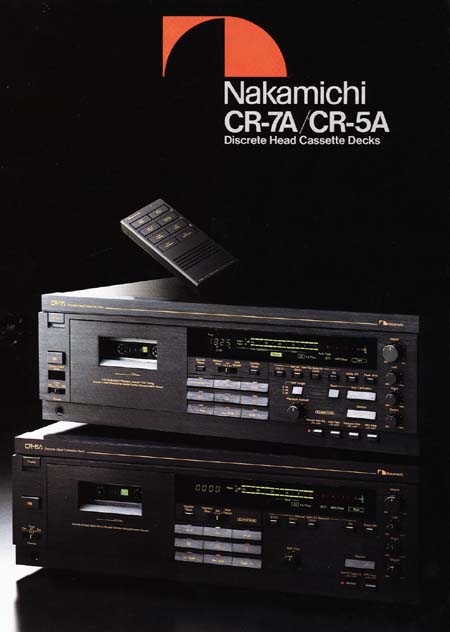
The Most Convenient... And Sophisticated... Recording Instruments Conceived by Man.
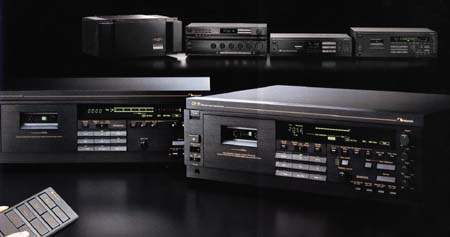
The Audio Archive: Shown in the above image, clockwise from top left: Nakamichi PA-7 power amplifier, ST-7 tuner sitting on top of the CA-7 control amplifier, OMS-7 CD player, CR-7 cassette deck, CR-7A cassette deck, and CR-5A cassette deck. Wireless remote at bottom left.
In cosmetics and design, the CR-7A and CR-5A mate with Nakamichi Series-7 and Series-5 electronics although either functcions perfectly in any system. Either can be connected to the Nakamichi CA-7A Control Amplifier and operated via the CA-7A's System Remote Control, but neither need be operated that way. The CR-7A comes with a wireless remote control; the CR-5A is compatible with the optional RM-5 Remote Control.
CR-7A Discrete Head Cassette Deck
The epitome of convenience and performance! Automatic calibration of playback, azimuth, bias and recording level with independent memory banks for the three major tape types. Manual control of playback azimuth too - even from your armchair via a wireless remote control. An accurate real-time counter with Auto Fade at the end of side and a special 2-second peak-hold on its 50-dB level indicators.
CR-5A Discrete Head Cassette Deck
Traditional Nakamichi technologies such as Discrete Three-Head recording and playback, the Asymmetrical Dual-Capstan transport, and low-noise/low-distortion electronics make this deck a top performer. Automatic Tape/EQ setting with manual override and Bias Tune to match each tape for best performance. Remote control either via the CA-7A Amplifier or RM-5 Remote Control Unit.
The Unique Combination
Never before has casette recording been so convenient and so good! The CR-7A and CR-5A Discrete Head Cassette Decks combine the features you've been looking for with the crystal-clear sound that is a Nakamichi hallmark.
Both decks utilize Nakamichi's Microprocessor-Controlled Direct-Drive Asymmetrical-Dual-Capstan Transport, Discrete-Head Technology, and high-performance electronics to ensure unparalleled sonic accuracy - and much more!
If you're a casual recordist, you'll appreciate the ability of these decks to sense tape type and set bias and equalization automatically; if you're a serious audiophile, you'll appreciate the ability to override the automatic system and choose EQ manually for special situation. And either way, you'll appreciate the central display that alerts you to every important switch setting.
The CR-5A lets you adjust bias for best recording. The CR-7A goes a giant step further with automatic adjustment of bias, recording level and playback azimuth for perfect recordings on virtually any tape formulation.
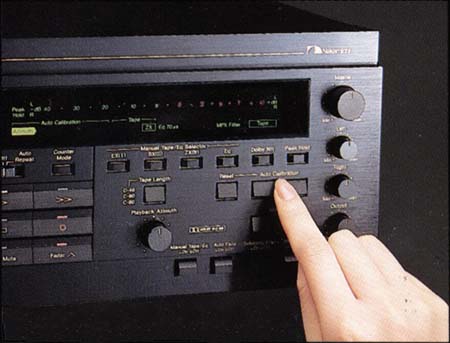
CR-7A Auto Calibration More Precise Than Manual Adjustment
Auto Calibration Azimuth/Bias/Level (CR-7A)
Even among cassettes of the same type, differences exist from one to the next; among brands, all bets are off! To realize any tape's full potential, the recorder's bias and Dolby calibration must be adjusted to match that tape's characteristics. Auto Calibration simplifies this task but conventional auto-calibration decks are as likely to miscalibrate as they are to calibrate correctly! The reason? Azimuth error!
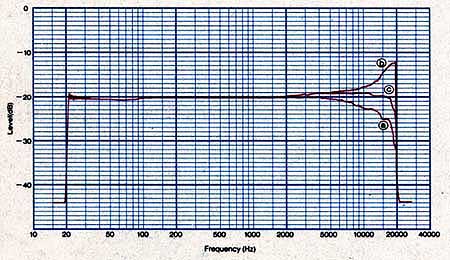
(a) Frequency response with proper bias and equalization. High-frequency loss due to azimuth misalignment. (lower curve)
(b) Frequency response after auto calibration on preorly aligned deck. High-frequency rise due to miscaqlibrated vias and/or equalization. (upper curve)
(c) Frequency response after auto calibration on auto-calibrating deck. Response seems "flat" but deck has underbiased and/or over-equalized the tape to compensate for azimuth error. (middle curve)
Figure 1. Auto Calibration With Azimuth Error Of 10.4' (Deck: CR-7A; Level: -20dB; Playback EQ: 70 microseconds; Tape Type: ZX (Metal))
The causes of azimuth misalignment are explained below. Suffice it to say here that when azimuth error is ignored on an auto-calibrating deck, serious problems ensue. When a deck "auto calibrates", it tests response by recording and reproducing a series of tones. On playback, each tone is checked and bias, recording EQ or both are adjusted until the proper levels are achieved.
In principle, the procedure is fine: in practice, it results in miscalibration unless the playback head is perfectly aligned with the recording head. Figure 1 (above) shows what happens with a 10.4' azimuth misalighment. Curve (a) is the response with proper bias; the high end rolls off because of the azimuth error. The auto-calibration circuit interprets the loss as a bias or EQ error which it should "fix." After calibration, the deck seems to have the response shown in (c) but, in actuality it has underbiased the tape, used exceissive recording eQ (or both) in order to compensate for azimuth error. When the tape is reproduced on a properly aligned deck, the response rises as in (b).
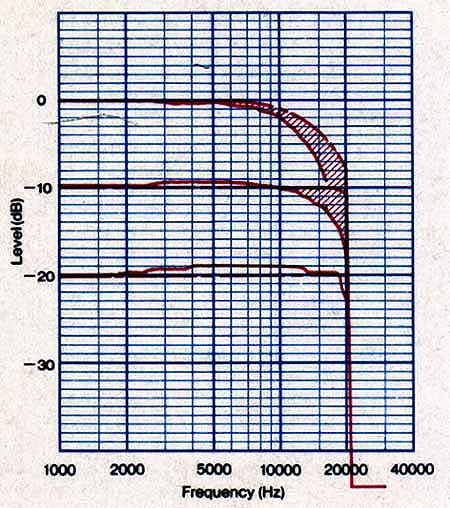
Dotted Line: Frequency response with proper calibration
Solid Line: Frequency response with excessive recording equalization (miscalibration)
Shaded Area: Loss in dynamic range due to miscalibration
Figure 2. Dynamic Range Loss Due To Equalization Miscalibration (Deck: CR-7A; Playback EQ: 70 microseconds; Tape Type: ZX (Metal))
It would have been better not to have "auto-calibrated!" Not only does the response rise, but if the deck "did its thing" by underbiasing the tape, dropouts and distortion increase and dynamic range is reduced. If the deck "fixed" the error by boosint EQ, it runs out of headroom. Figure 2 (above) shows what happens. The dotted curves show the response of a properly calbirated tape, the solid curves the response with exciessive recording equalization, and the dynamic range between them is lost!
The CR-7A features a radically new and improved Auto-Calibration system that ensures accurate calibration by aligning play-head azimuth as a first step. The azimuth-alignment and auto-calibration procedure takes about 15 seconds to complete and is controlled by a new 6-bit/64-step microprocessor. The Audio Archive: Nakamichi's auto-calibration system is "radically new" for cassette, but in fact is identical to the calibration process as used on professional reel-to-reel machines where the first step in calibrating a machine for recording is to align the azimuth. The flow chart below for the Nakamichi Auto Calibration is comparable to a "quick alignment" on a reel-to-reel deck. A full alignment on a reel-to-reel deck would involve more test tones or a frequency sweep, and a few more iterations of EQ adjustment. The Nakamichi Auto Calibration process for recording goes further than any other cassette deck maker when it comes to calibrating correctly.

Figure 3. Auto Calibration Flow Chart
The procedure follwos the flow chart of Figure 3 (above). Azimuth alignment is first tested by the time-proven "phase-comparison " method outlined in Figure 4 (below). If an interchannel phase error is detected, play-head azimuth is adjusted in 1.3' steps until the error is corrected and that correction is confirmed 10 times.
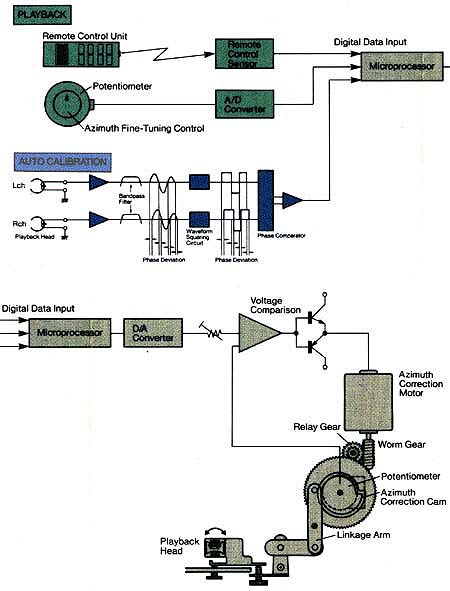
Figure 4. Playback-Head Azimuth-Alignment System Block Diagram
Once the head is aligned, Dolby level is checked at 15 points, independently in the left and right channels, and the gain of each recording amplifier is adjusted to ensure Dolby tracking within 0.3 dB. Bias is adjusted by recording a 15 kHz tone and checking playback level at 15 points independently in the two channels. Bias is adjusted and the playback level rechecked until 15 kHz response is within 0.3 dB of nominal. Since bias and sensitivity are interrelated, the calibration procedure is repeated a second time.
Once the deck is calibrated, the microprocessor stores the bias and level data in memory. Separate memories are provided for each tape type (I, II, and IV) so the proper values are recalled the next time a tape of that tyhpe is mounted and sensed by the Automatic Tape Selector. At the end of the procedure, the CR-7A rewinds the tape to the point at which it began auto calibrating and enters REC/PAUSE, ready to record.
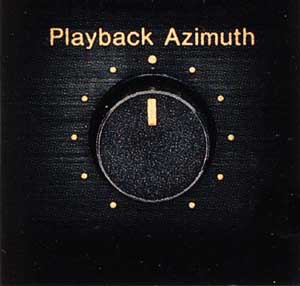
Playback Azimuth manual adjustment knob
As explained in the next section, azimuth misalignment produces serious treble losses wich are exacerbated by noise-reduction systems. Of course, the CR-7A reproduces tapes it recorded itself - and tapes recorded on a properly aligned deck - perfectly well. Thanks to its manual play-head azimuth-alignment system, it also can reproduce tapes recorded with improper azimuth and produce full-range response.
As shown in Figure 4 (above), the azimuth-alignment mechanism can take commands from three sources: the Auto-Calibration system, a front-panel Playback Azimuth control or via the RM-7C Wireless Remote Control Unit supplied with the CR0-7A. When playing a tape of questionable azimuth, you need only adjust the play-head azimuth via the front-panel control or the remote for best treble response. Once you have, you're assured of hearing everything recorded on that tape! During correction, one channel of the recording indicator converts to a "relative-azimuth" display to show you how far you've adjusted the head.
With the exception of Auto Calibration, Azimuth Alignment and a few special features found only on the CR-7A, the CR-5A and CR-7A are virtually identical. Both use the special technologies that make a Nakamichi cassette deck unique in the industry.
Azimuth misalignment... The Achilles' Heel of cassette recording
As tape passes over the record-head gap, it receives a magnetic imprint that is roughly proportional to the current through the record-head winding. When the tape subsequently passes over the play-head gap, the pattern is sensed and generates a voltage across the play-head winding. However, unless the play-head gap is perfectly aligned with the recording, treble response is diminished. This in a nutshell, is the "azimuth-alignment problem." It is especially severe in the cassette format because, at slow tape speed, each cycle of high-frequency signal occupies an extremely short length of tape.
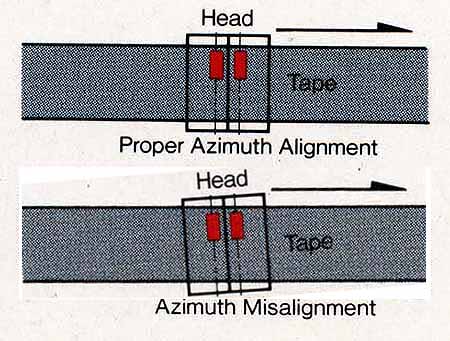
Figure 5. Azimuth Misalignment
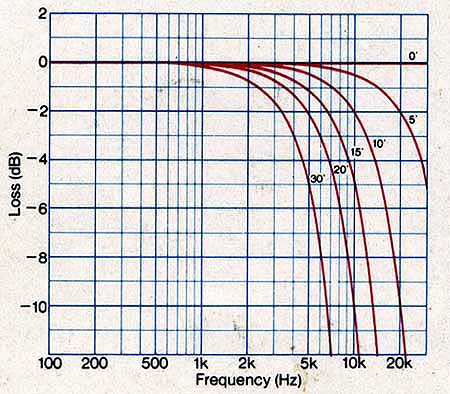
Figure 6. Azimuth Misalignment Loss vs Frequency
Figure 6 (above) graphs the loss as a function of frequency for various azimuth errors. Even with a tiny 5' error (1/12-degree), there is a 2-dB loss at 20 kHz. With a more typical error - 10' or 1/6-degree - there's a 2-dB loss at 10 kHz and almost a 10-dB loss at 20 kHz. Companding noise-reduction systems such as Dolby-B and -C NR exacerbate the problem.
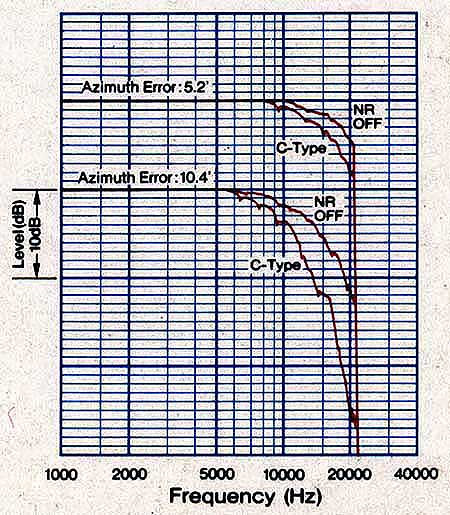
Figure 7. Frequency Response With 5.2' and 10.4' Azimuth Error With and Without Dolby-C NR (Deck: CR-7A; Level: -20dB; Playback EQ: 70 microsecond; Tape Type: ZX (Metal))
Figure 7 (above) compares the actual response curves of a recorder with and without Dolby-C NR, with two different azimuth errors. As you can see, Dolby-C NR more than doubles the loss in both cases!
